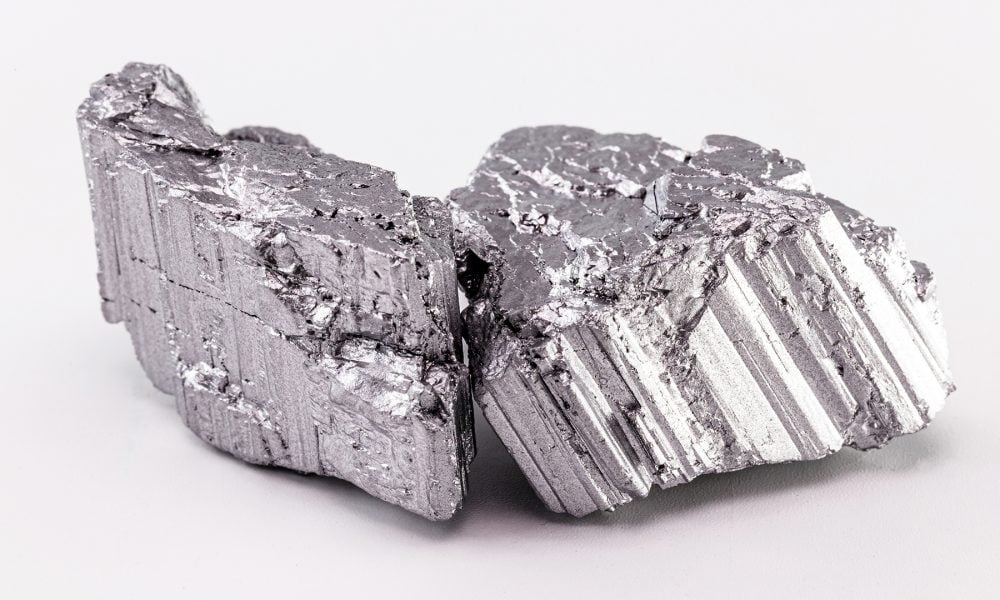
Are Rare Earth Elements Really So Rare?

When we hear the term “rare earth elements,” our minds often conjure up images of elusive and scarce materials. After all, the name itself implies a level of scarcity that can make them seem like precious gems hidden deep within the Earth’s crust.
However, recent research has uncovered a startling truth. These elements, including praseodymium, neodymium, terbium, and dysprosium, may not be as rare as we once believed.
The U.S. Geological Survey Revelation
Our story begins with a groundbreaking study conducted by the U.S. Geological Survey. This study delved into the concept of “crystal abundance,” a measure of how frequently elements appear in the Earth’s crust. The results of this research were nothing short of astonishing.

Pixabay / Pexels / Essentially, rare earth elements like neodymium, praseodymium, neodymium, terbium, and dysprosium are the most valuable rare earth elements.
Rare earth elements, those often considered rare and precious, were found to be “almost in the same order of magnitude” as common elements like zinc and copper. The implications of this discovery are profound and challenge our preconceived notions about these elements.
The Valuable Quartet: Praseodymium, Neodymium, Terbium, and Dysprosium
Within the world of rare earth elements, there exists a quartet of extraordinary significance: praseodymium, neodymium, terbium, and dysprosium. Often overshadowed by their more famous counterparts like gold or platinum, these four elements play pivotal roles in our modern lives.
They are the unsung heroes behind our technological marvels, silently powering everything from electric vehicles to wind turbines.
Praseodymium
This unassuming element possesses remarkable properties that make it invaluable in the world of technology. Praseodymium is a key ingredient in the production of strong permanent magnets.
Thus, this is essential for a myriad of applications, including headphones, electric car motors, and wind turbine generators.

Alex / Pexels / Compared to metals like gold, platinum, and silver, these rare earth elements are not so rare.
Neodymium
Often paired with praseodymium, neodymium forms the backbone of the neodymium-iron-boron magnet, one of the most powerful magnets known to humanity.
So, these magnets are vital for the efficient functioning of electric vehicles and various high-tech gadgets.
Terbium
Next up: Terbium might not be a household name. But its role in our lives is substantial.
Thus, it contributes to the production of vibrant green phosphors used in color television tubes and energy-efficient lighting.
Dysprosium
Just like its rare earth counterparts, Dysprosium has its own unique qualities. It enhances the performance of magnets used in electric vehicles by increasing their heat resistance. Thus, it is a critical factor for these high-performance machines.

GTN / It turns out that these earth elements are not rare. They are hard to extract from their actual sources.
The Paradox: Abundance vs. Accessibility
The U.S. Geological Survey’s findings challenge the perception of rare earth elements as scarce resources. So, why do we still consider them “rare”? The answer lies in the paradox of abundance versus accessibility.
While these elements are relatively abundant in the Earth’s crust, extracting them is a formidable challenge. Consequently, this difficulty in obtaining rare earth elements is what lends them their deceptive rarity.
Imagine searching for a needle in a haystack. But the haystack is a vast and complex mixture of materials, and the needle is smaller than a grain of sand. Extracting rare earth elements from their natural sources is akin to solving a colossal, three-dimensional jigsaw puzzle, where all the pieces look remarkably similar.
Furthermore, the extraction of rare earth elements often involves harsh chemical processes that can have detrimental environmental impacts.
More in Buzz
-
`
Dwayne ‘The Rock’ Johnson’s Business Ventures
When you think of Dwayne ‘The Rock’ Johnson, the first thing that may come to mind is his impressive career in...
December 5, 2023 -
`
Sam Bankman-Fried’s Secret Celebrity Network Exposed
In the glitzy world of cryptocurrencies, where fortunes can be made and lost instantly, having connections to the stars can make...
November 29, 2023 -
`
Exploring America’s Top Tier Hotels
For those who crave the finer things in life, the United States offers a treasure trove of luxurious hotels that elevate...
November 19, 2023 -
`
Where Does Elon Musk Live? Let’s Find Out!
Elon Musk, the billionaire entrepreneur and visionary behind Tesla and SpaceX, is known for pushing the boundaries of technology and innovation....
November 10, 2023 -
`
The Origin of Elon Musk’s Feud With Bill Gates
In the world of tech titans and billionaire visionaries, it’s not uncommon for rivalries and feuds to develop. One of the...
November 1, 2023 -
`
Wall Street Downgrade VS. Upgrade: Which One Is Better for Your Money?
“Bad news sells.” It is an age-old adage we have all heard before. In the world of finance, the principle often...
October 28, 2023 -
`
Guitar Smashed By Nirvana’s Kurt Cobain Sells for Nearly $600k!
In the world of rock ‘n’ roll, legends are born from the music and the artifacts left behind. One such artifact,...
October 21, 2023 -
`
Dwayne “The Rock” Johnson’s Plastic Surgery Journey
Dwayne Johnson, globally celebrated as “The Rock,” is synonymous with wrestling and Hollywood stardom. With a physique chiseled from relentless workouts...
October 10, 2023 -
`
The Most Expensive Things Owned By Brad Pitt
Brad Pitt, one of Hollywood’s most iconic and influential actors, has amassed fame and fortune and an impressive collection of extravagant...
October 3, 2023















You must be logged in to post a comment Login